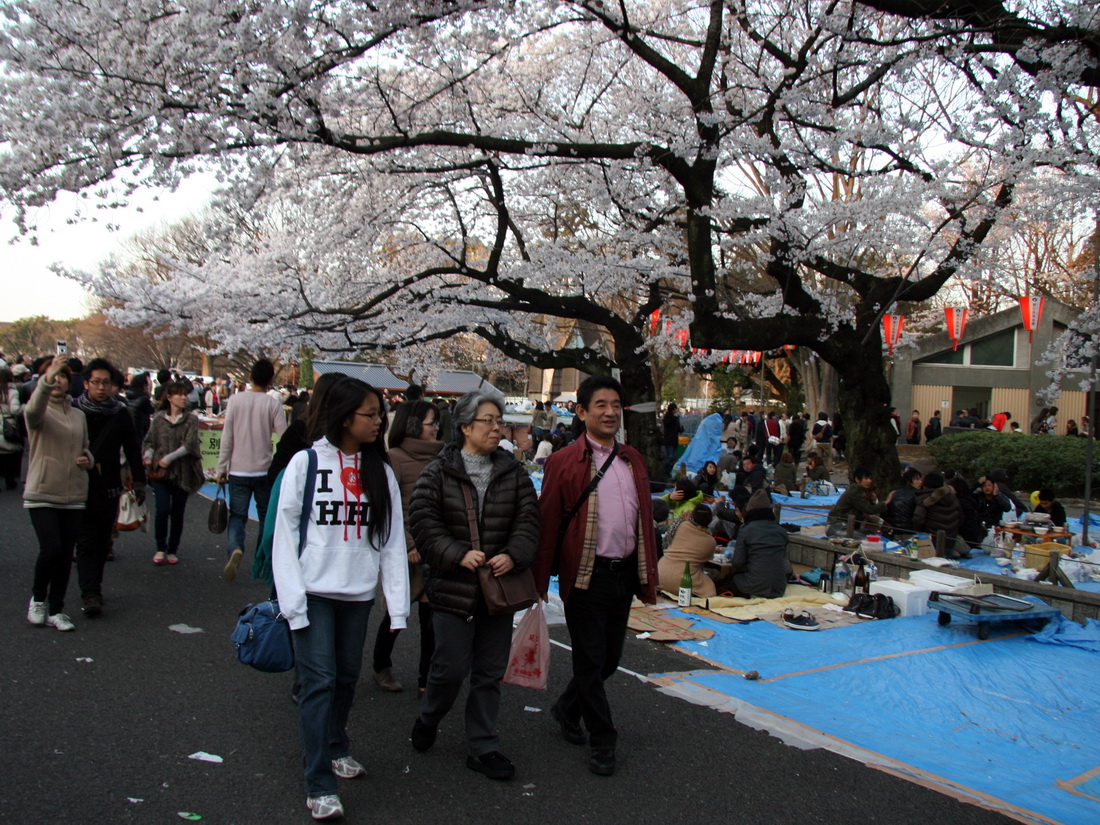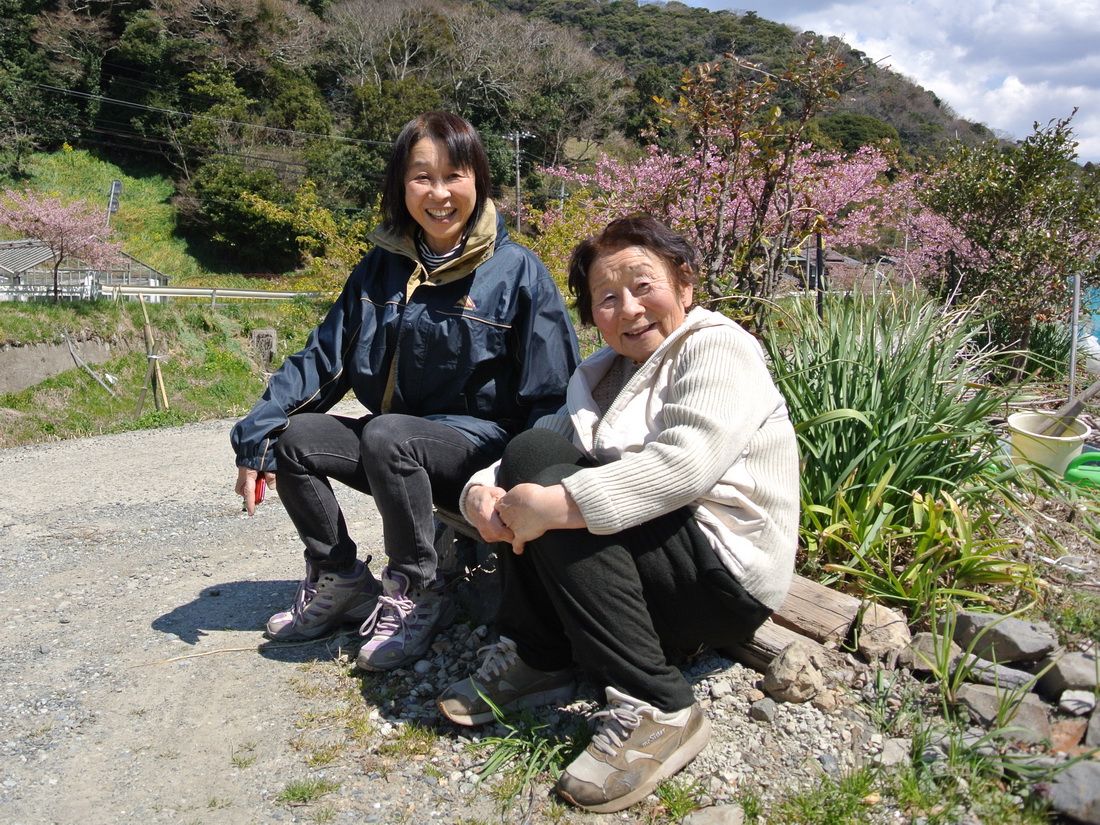Hanami is a Japanese word that translates to ‘enjoying the beauty of flowers’. However, for the Japanese, it’s more than just flower viewing; it’s a celebration marked by enthusiasm and joy. All Japanese media outlets report the first cherry blossoms blooming. In Tokyo, this usually happens at the end of March.
It’s incredibly beautiful; I purposely planned my trip around this time. The first few days in Tokyo were sunny, but the cherry blossoms hadn’t bloomed yet. And suddenly, everything turned pink, literally in a couple of days!
How to celebrate
Previously, cherry blossom season meant it was time to plant rice. Now it’s time to prepare mats and head out to gardens and parks. In Japan, there are small gardens everywhere, and cherry blossoms are everywhere. And where there are cherry blossoms, you’ll find plenty of people during hanami, both day and night.
In Tokyo, on the eve of the weekend, people start laying out mats in the most popular picnic spots from early morning—I’m not exaggerating. By morning, it’s impossible to find a free square meter; the mats are closely pressed against each other.
Japanese people sit at such gatherings for a long time, sometimes all day, and disperse when it gets dark and too cold to sit on the ground. However, some parks with special lighting that attracts visitors even at night.
Japanese people love cherry blossom gatherings so much that they usually participate several times during the two weeks when cherry blossoms bloom. Some go with their company, others with their family on weekends, and with friends in the evening after work. Many arrange picnics right near their homes, even in areas with skyscrapers.
What to eat during hanami

Thousands of people flock to parks to organize feasts under the blooming trees, and sometimes these gatherings continue until late at night.
There is no special food for this holiday, but stores take the opportunity to sell special sets. They are often seen among those sitting under the cherry blossoms. They contain a variety of Japanese food that is useless to describe — you have to try it.
Here you’ll find rice, marinated daikon radish, specially prepared soy sauce, seaweed, and fish or meat, basically, the standard Japanese “tourist breakfast” that is usually taken for picnics, all sorts of gatherings, or trips. Many bring their own food from home or buy various foods separately.
If cherry blossom gatherings take place near their home, then the Japanese, especially the elderly, bring pots and pans. Companies order o-bento—packed food, which includes rice, fish or meat, raw or pickled vegetables.
There is also oden—broth with eggs, daikon radish, konjac herb, fish cakes, etc. And the picnic participants bring something else of their own—sweets, chips.
Depending on the group, people drink popular beer, low-alcohol cocktails in cans, and bring tea in thermoses. Drunk people are rare; the Japanese consider drinks stronger than 12 % very strong and rarely drink them.
Shoes should be taken off on the mats, and trash must be carefully cleaned up. Special areas are set up in each park where people put all the trash in bags. In the largest parks, piles of trash as tall as a person accumulate.
My top places in Tokyo for hanami
In Tokyo, there are plenty of amazing gardens to see cherry blossoms. Let me share my top picks with you.
1. My favorite spot was Shinjuku Gyoen National Garden. It’s bursting with cherry blossoms – 1,500 cherry trees with 75 different varieties. They come in all sizes, colors, and shapes, making it a fascinating sight to behold.
2. Next on my list is Ueno Park, Tokyo’s largest city park. It’s huge, and there are 1,100 cherry trees here too. I had a blast wandering around.
3. Near Asakusa Temple is the wonderful Sumida Park. What I loved here was the cherry blossoms lining the river – about 400 trees. The cherry blossom road stretches for a kilometer, and the trees are beautifully illuminated.
4. In Rikugien, there’s the famous weeping cherry tree, huge and majestic. Many people come specifically to see it. In the evening, it’s all lit up – so beautiful.
5. Also, Inokashira Park (home to the Ghibli Museum) is famous: you can ride swan boats under the cherry blossoms and watch performances by artists and singers. I remember this park well from the film “Cherry Blossoms” by German director Doris Dörrie.
Don’t miss the trip out of town!
Once Japanese people catch sight of the first blossoms, it’s as if they forget about everything else. If they come across a blossoming tree along the way, they’ll stop their car and go admire, take pictures of the first blooms, and share them on social media platforms.
Once, we went with a Japanese family to a small farm 150 kilometres from Tokyo. Along the way, we saw cherry blossoms in bloom – the first of the year. The joy my friends felt was palpable! So, make sure to experience Hanami beyond Tokyo; this celebration is beautiful throughout Japan.












